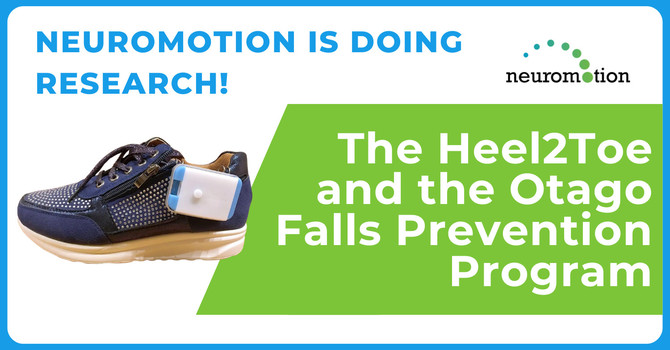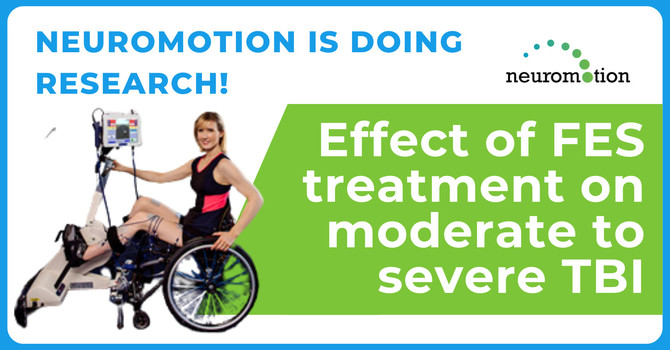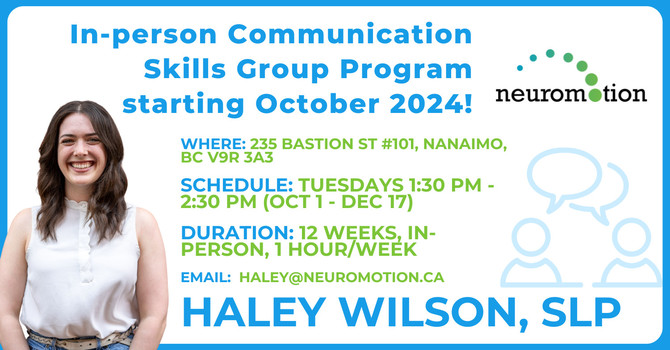
Background
To understand FND, it is crucial to understand that everyday experiences also get integrated internally to shape the predictions of the brain. For example, the brain integrates expectations about the body and its signals, thus refining sensorimotor perceptions. In the case of FND symptoms, the integration of these factors is compromised (Drane, et al., 2022, p. 7).
FND is characterized by dysfunction within and across several brain circuits, this dysfunction affects different constructs of the brain and can affect the processing of emotions, interoception (internal signals), predictive processing, salience, multimodal integration, etc (Drane, et al., 2022, p. 1). Functional neurological disorder causes disabling neurological symptoms, such as abnormal control of movement, abnormal sensations, altered awareness and cognitive symptoms (Gilmour, et al., 2020, p. 2164). In FND the brain does not weight the ascending and descending sensory data normally, this leads to errors in the brains way of predicting sensory data and leads to the generation of abnormal perceptions or movements (Molero-Mateoa & Molina-Ruedac, 2024, p. 506). FND generally affects young to middle aged adults, however with early diagnosis and evidence-based treatments, recovery can be promoted (Aybek & Perez, 2022, p. 1).
Unfortunately, many people living with FND do not get diagnosed or treated due to the limited resources and thus access to FND specialists and treatments are also limited (Gilmour & Jenkins, 2021, p. 205). Statistics show that FND cases that require hospitalization often present as functional symptoms and predominantly occur in females (Gilmour & Jenkins, 2021, p. 214). The symptoms of people living with FND can be grouped into either presenting acute or chronic symptoms (Gilmour & Jenkins, 2021, p. 205). Those presenting with acute symptoms are often found to be mostly men and where older individuals than those presenting with chronic symptoms (Gilmour & Jenkins, 2021, p. 204).The two most frequent symptoms in which FND presents itself include motor and seizure type symptoms (Aybek & Perez, 2022, p. 1). Further, people living with FND often experience the worsening of their motor symptoms in the case of negative emotions (Drane, et al., 2022, p. 3).
Pathophysiology
FND is a multi-network disorder inducing abnormalities within and across brain circuits. This causes disorder in the constructs responsible for homeostatic balance (balance of internal systems, e.g. temperature regulation), multimodal integration, interoception, attention, sense of agency, and emotion/threat processing (Aybek & Perez, 2022, p. 2). Neuroimaging studies have shown FND to be characterized by structural and functional differences in the central nervous system that causes the hypoactivation of motor pathways (limited activation of movement pathways) and the increased modulation by the limbic system (responsible for emotions and memory) (Molero-Mateoa & Molina-Ruedac, 2024, p. 509).
 Figure 1: Illustration of how FND affects brain circuits from within and between circuits (Aybek & Perez, 2022, p. 2).
Figure 1: Illustration of how FND affects brain circuits from within and between circuits (Aybek & Perez, 2022, p. 2).
Studies have found that FND is often associated with the interplay between biological/genetic risks and adverse life events, for example studies have shown that people with FND also display symptoms of post-traumatic stress disorder, alexithymia (emotional blindness), or obsessive-compulsive personality disorder (Perez, et al., 2021, pp. 671-672).
Risk factors for FND include the following: (Perez, et al., 2021, p. 671)
- Adverse life experiences
- Heightened bodily attentional focus
- Increased arousal
The diagnosis of FND has been improved by better specificity in diagnostics, bringing those living with FND closer to receiving the correct treatment (Perez, et al., 2021, p. 669). In terms of future developments in diagnostics, the use of biomarkers should be investigated, and the differences in FND subtypes and their applicable symptoms should be contextualized (Perez, et al., 2021, p. 670).
As part of treating FND, it is crucial to explain the diagnosis to patients. For example, motor symptoms are often described as a disconnection between the brain and the body or can be described in an analogy of software malfunction (Gilmour, et al., 2020, p. 2165).
Various treatment options and interventions are available however a multidisciplinary approach is thought to be best. Available interventions include the following: (Gilmour & Jenkins, 2021, p. 213)
- Physiotherapy
- Psychotherapeutic strategies
- Occupational therapy
- Psychiatry
- Speech and language pathology
- Antidepressant medications
- Transcutaneous electrical nerve stimulation
- Electromyography biofeedback
- Recreation therapy
- Hypnosis
Symptoms
- Weakness
- Tremor
- Dystonic posturing (abnormal posture caused by involuntary contraction)
- Episodes of altered awareness
- Abnormal sensation (Gilmour, et al., 2020, p. 2164)
- Gait disorders
- Dystonia (involuntary and uncontrollable muscle contractions)
- Fixed posture (Gilmour, et al., 2020, p. 2166)
- Functional seizures distinct from other seizures and can be diagnosed by video-electroencephalography (Gilmour, et al., 2020, p. 2166).
- Altered memory
- Altered vision
- Somatosensory symptoms, e.g. paraesthesia (pins & needles) and anaesthesia (numbness)
- Functional hearing loss, or tinnitus (Gilmour, et al., 2020, p. 2167)
- Functional urinary symptoms (altered bladder control)
- Persistent postural perceptual dizziness (PPPD)
- Functional speech and voice disorders
- Fowler’s syndrome (mostly in women) – cause by urinary retention and can present as back pain or discomfort during urination
- Pain
- Chronic migraine
- Fatigue (Gilmour, et al., 2020, p. 2168)
- Breathlessness (Kozlowska, et al., 2021, p. 73)
FND is often times also associated with comorbid psychiatric conditions like depression, PTSD, anxiety, ADHD and certain phobia (Gilmour & Jenkins, 2021, p. 213). Often the non-motor symptoms are seen to have a greater impact on the health-related quality of life in people living with FND (Gilmour, et al., 2020, p. 2165).
FND can be tested through physical tests. Below are the tests and their diagnostic signs for FND (Aybek & Perez, 2022, p. 8):
- Oculomotor function → convergence spasm, other abnormal eye movements
- Gait → monoplegic leg dragging, excessive visible effort, falling toward support, slowness, hesitation, non-economic posture, knee buckling
- Hemifacial spasm → long contractions (>3seconds), tonic deviation of lip, lack of eyebrow elevation on the side of the spasm
- Trunk movements → asymmetry in sternocleidomastoid muscle.
- Cataplexy → lack of sudden facial expression change, facial jerks, head drop or trunk fall, preserved tendon reflexes.
- Upper arm weakness → discordance in strength, collapsing, drift without pronation, co-contraction of agonist and antagonist muscles.
- Involuntary hand plegia → involuntary abduction of fifth finger in cases of forced abduction.
- Lower limb weakness → discordance, collapsing, co-contraction, involuntary hip extension stronger than voluntary hip extension.
- Tremor → distractibility, increased amplitude with weight load on the wrist, if limb with tremor immobilized then tremor will appear in different area of the body.
Because of the heterogeneity in which FND is presented, it is important to individualize therapy to fit every client’s needs and goals (Gilmour, et al., 2020, p. 2166).
Pharmacotherapy
There are no existing pharmacological therapies to directly treat FND, however there are therapies for the treatment of FND symptoms (Perez, et al., 2021, p. 674) such as the following:
- Medications like serotonin reuptake inhibitors and serotonin norepinephrine reuptake inhibitors for managing anxiety and depression (Aybek & Perez, 2022, p. 13)
- Medications to modulate migraines and insomnia (Perez, et al., 2021, p. 674)
- Botulinum neurotoxin for managing tremors and similar functional movement disorders (Perez, et al., 2021, p. 674)
- Pregabalin to modulate cortical excitability (the stimulation of cortical neurons) (Gilmour, et al., 2020, p. 2169)
Psychotherapy
Due to the high prevalence of co-existing psychiatric conditions in combination with FND, it is recommended to assess and treat these conditions if present (Gilmour, et al., 2020, p. 2167).
Further, cognitive behavioural therapy (CBT) focusses on the interplay of somatic misinterpretations on functional motor functions and emotions, and uses problem-solving techniques to alleviate FND symptoms (Perez, et al., 2021, p. 674). CBT allows people living with FND to identify their warning symptoms and to then apply sensory grounding techniques, which shifts their attention away from their symptoms. This method is often used to treat functional seizures (Gilmour, et al., 2020, p. 2167). Studies using this therapy have shown reductions in somatic symptom burdens, anxiety about health, and functional motor symptoms (Perez, et al., 2021, p. 674)
Physical Therapy
In the case of FND it is important that physical therapies, with the goal of retaining function, be informed by a psychological understanding of the symptoms (Perez, et al., 2021, p. 674)
- Transcranial magnetic stimulation (TMS) (Gilmour, et al., 2020, p. 2168)
- Occipital TMS to treat functional visual loss
- Large-field repetitive TMS over the centro-parietal area to treat functional somatosensory symptoms
- TMS over the primary motor cortex to reduce pain
- TMS over the dorsolateral prefrontal cortex to treat fatigue and comorbid depression (Gilmour, et al., 2020, p. 2169)
- Specialist physiotherapy – to treat functional gait disorder (Gilmour, et al., 2020, p. 2168) and motor FND (Aybek & Perez, 2022, p. 12). This method has been associated with improved understanding of symptoms, and greater perceived control over symptoms and motor functions by people living with FND (Nielsen, et al., 2024, p. 683).
- Hypnosis
- Electromyographic biofeedback (Gilmour, et al., 2020, p. 2166)
- Education in distraction techniques or sensory grounding
- Graded exercise and pacing of activity – to treat pain and fatigue (Gilmour, et al., 2020, p. 2165)
- Vestibular therapy - to treat PPPD (Gilmour, et al., 2020, p. 2168)
- Weight bearing exercise
- Exercise therapy - to build stress resistance, decrease inflammation, addresses deconditioning and improves mental health (Kozlowska, et al., 2021, p. 74).
- Psychologically informed physiotherapy or Bayesian model – e.g. retraining motor function through attention diversion (functional neurological symptoms are seen to worsen when attention is drawn to the body) (Aybek & Perez, 2022, p. 12). This therapy is described as facilitating movement rather than supporting it (LaFaver, et al., 2021, p. 611). Psychologically informed physiotherapy integrates psychological interventions into physiotherapy interventions by using playful or engaging activities to indirectly engage the affected body parts (Kozlowska, et al., 2021, p. 74).
- Multidisciplinary rehabilitation – combining neuropsychiatry, psychology, physiotherapy, occupational therapy, and speech and language therapy
A multidisciplinary approach is recommended and has shown significant improvements in function and quality of life in people living with FND (Gilmour, et al., 2020, p. 2166).
New Research
Current research
- Recent studies researched the role of emotions in the pathophysiology of FND and found that the recall of traumatic life events directly affect the activation of the supplementary motor area, and shows abnormal connectivity in various areas of the brain during the resting state (Perez, et al., 2021, p. 670).
- Current studies are evaluating the efficacy of mindfulness-based therapy, prolonged exposure, and dialectical behavioural therapy (Aybek & Perez, 2022, p. 13).
Upcoming research
- Research wants to identify the mechanism in which FND affects the relationship between conscious experiences of movement and neural network enabling movement and sensory factors (Perez, et al., 2021, p. 670).
- Future research aims to explore the development of technology-based rehabilitation and to improve access to specialist treatment, possible through the use of virtual reality or other wearable technologies (Perez, et al., 2021, p. 674).
How does Neuromotion apply recommended therapies and research?
Neuromotion applies a multidisciplinary approach in people living with FND. Neuromotion’s FND program integrates individualized sessions of physiotherapy, occupational therapy, speech and language therapy (in cases where it is applicable), and clinical counselling.
The physiotherapy sessions incorporate the following:
- Education about FND
- Functional movement retraining
- Aerobic exercise
- Sensorimotor training
- Motor control training
- Nervous system regulation and autonomic nervous system training
The clinical counselling sessions incorporate the following:
- Cognitive behavioural therapy (CBT)
- Mindfulness
- Improving emotional and cognitive brain health
Psychotherapy is provided for additional emotional support, greater self-awareness, and emotional understanding of both past and present life experiences. The goal is to shift in your ability to tolerate and grapple with painful emotions and life circumstances and create a sense of empowerment and self-acceptance.
The occupational therapy sessions incorporate the following:
- Planning & pacing
- Persistent pain education
- Mindfulness techniques and coping strategies
- Sleep hygiene
- Fatigue management
- Aids and adaptations
Speech & Language therapy is also incorporated when appropriate.
References
Aybek, S. & Perez, D. L., 2022. Diagnosis and Management of Functional Neurological Disorder. The BMJ, pp. 1-19.
Drane, D. L. et al., 2022. A Framework for Understanding the Pathophysiology of Functional Neurological Disorder. CNS Spectrums, pp. 1-16.
Gilmour, G. S. & Jenkins, J. D., 2021. Inpatient Treatment of Functional Neurological Disorder: A Scoping Review. The Canadian Journal of Neurological Sciences Inc., Volume 48, pp. 204-217.
Gilmour, G. S. et al., 2020. Management of Functional Neurological Disorder. Journal of Neurology, Volume 267, pp. 2164-2172.
Kozlowska, K., Gray, N., Scher, S. & Savage, B., 2021. Psychologically Informed Physiotherapy as Part of a Multidisciplinary Rehabilitation Program for Children and Adolescents with Functional Neurological Disorder: Physical and Mental Health Outcomes. Journal of Paediatrics and Child Health, Volume 57, pp. 73-79.
LaFaver, K. et al., 2021. Treatment of functional neurological disorder: current state, future directions, and a research agenda. CNS Spectrums, 26(6), pp. 607-613.
Molero-Mateoa, P. & Molina-Ruedac, F., 2024. Physiotherapy for Patients with Functional Movement Disorder: a Systematic Review. Neurologia, Volume 39, pp. 505-514.
Nielsen, G. et al., 2024. Specialist Physiotherapy for Functional Motor Disorder in England and Scotland (Physio4FMD): a Pragmatic, Multicentre, Phase 3 Randomised Controlled Trial. Lancet Neurology, Volume 23, pp. 675-686.
Perez, D. L. et al., 2021. Decade of Progress in Motor Functional Neurological Disorder: Continuing the Momentum. Journal of Neurology, Neurosurgery, and Psychiatry, Volume 92, pp. 668-677.



